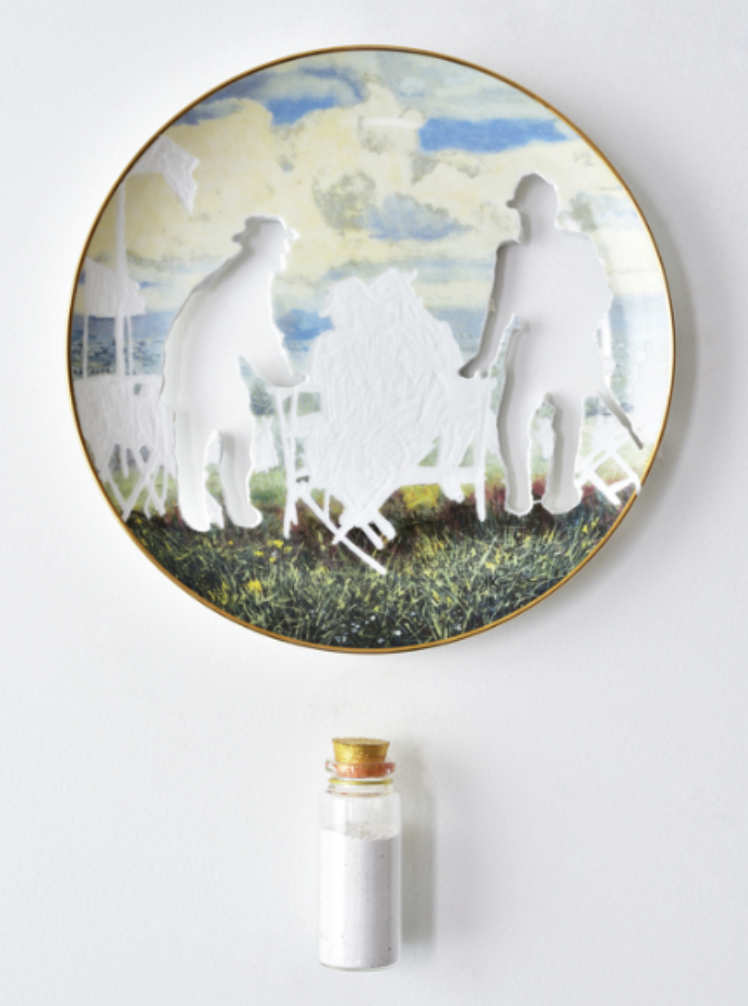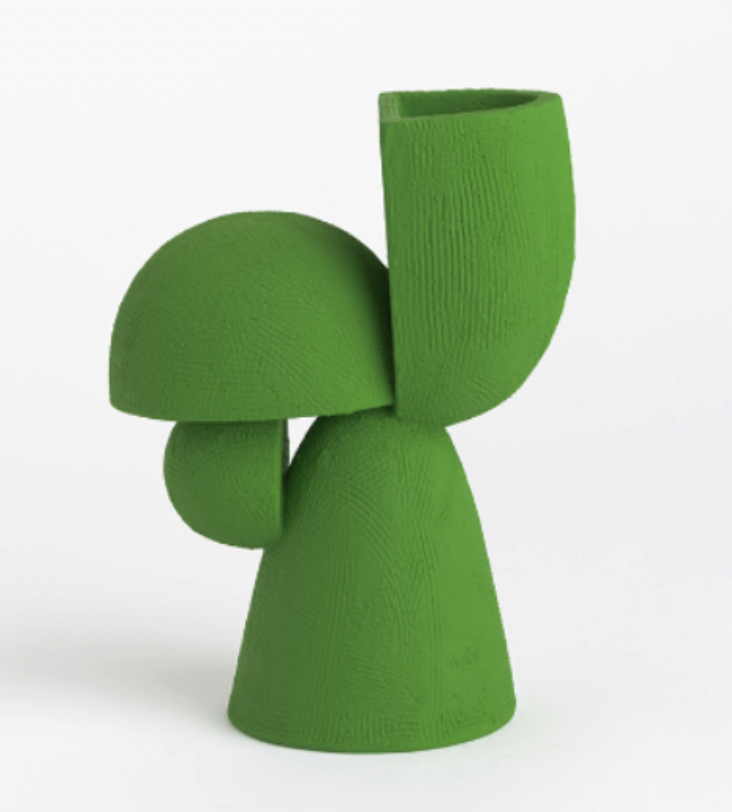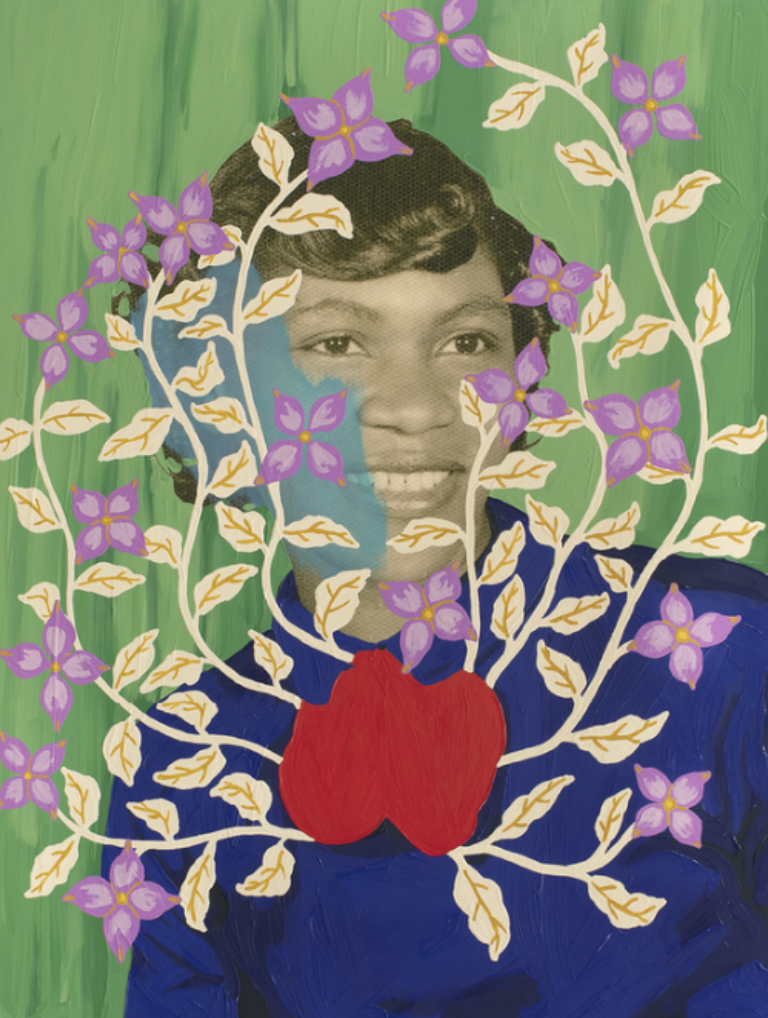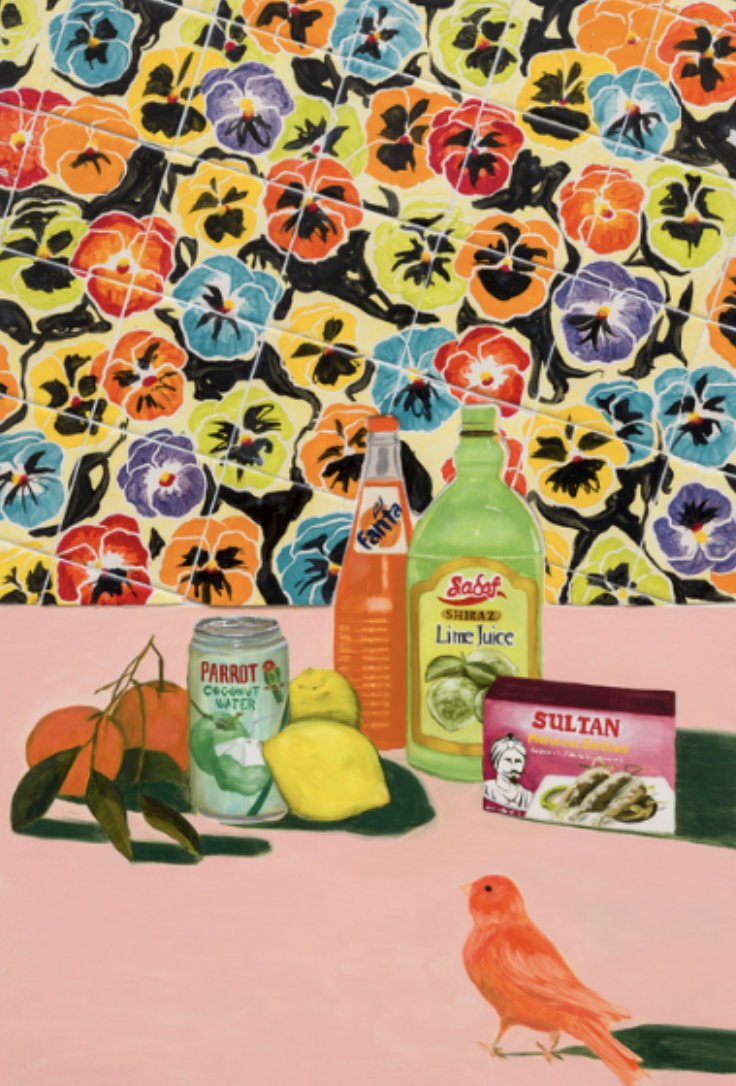ASPEN ISN’T JUST FOR SKIING….
AUGUST 2023
The first week in August, which has unofficially been dubbed “Art Week in Aspen,” is especially busy for art lovers, collectors, dealers, and local galleries as Aspen becomes somewhat of a hub for the international contemporary art scene revolving around the ArtCrush gala at the Aspen Art Museum.
Multiple events take place promoting this cultural celebration, including the Intersect Aspen art fair. In its third year, Intersect Aspen returned to the Aspen Ice Garden with 31 galleries and a slew of new activities, talks, and VIP offerings. Below are some highlights from the fair and from the art auction that benefits the museum.
HIEJIN YOO
Hiejin Yoo’s oil paintings focus on mundane yet intimate moments from everyday life. Yoo feels embraced by Yosemite and California, as well as her travels to New York, memories from South Korea, and of course, her imagination. These all result in a body of work that serves as a dedication to her adopted home, the romantic relationship between the artist and California, with hands meeting in joyful agreement.
The hands - the artist’s own - are ever present and simultaneously nearly invisible. Initially used to represent the longing between the artist and her husband as they were geographically separated, the hands have evolved into an image on the canvas that allows the viewer to lose themselves in the ubiquitous warmth of intimacy. Yoo insists on the viewer finding joy in the paintings through her glowing palette, presenting beautiful femininity within a sense of perfect nature. Her images, which are drawn from her personal life, hint at traces of memories and innermost secrets.
Hiejin Yoo was born in Münster, Germany, in 1987 but currently lives and works in Los Angeles, California. Her work is included in public and private collections, including the High Museum of Art, Atlanta, GA; PAMM Museum, Miami, FL; Institute of Contemporary Art (ICA), Miami, FL; The FLAG Art Foundation, New York, NY; and Xiao Museum, Rizhao, China. Yoo received a BFA from the School of the Art Institute of Chicago and an MFA from the University of California, Los Angeles.
ELIZABETH ALEXANDER
Elizabeth Alexander is an interdisciplinary artist specializing in sculptures and installations made from deconstructed domestic materials. In the series featured at the fair, titled "A Greater Work is Ahead," Alexander has altered pieces from the "Jackson and Lee: Legends in Gray" collection of commemorative plates. These plates were printed long after the Civil War with romantic illustrations, created for people to hang in their homes, to pass dangerous values down to future generations aided by collectible marketing.
When the artist stumbled across her first set of plates in a tiny junk shop, it felt like a call to action. She immediately envisioned using the porcelain cutting techniques she had mastered to grind out these harmful symbols of oppression. Alexander edits each plate by extracting the Confederate symbols, leaving only the American landscape between the voids. The dust from each removal is harvested and displayed below its plate of origin to show that history cannot be erased.
Alexander holds degrees in sculpture from the Cranbrook Academy and Massachusetts College of Art, where she discovered the complex nature of dissecting objects of nostalgia. Alexander’s work is included in permanent collections at the Crystal Bridges Museum in Bentonville, AR, and the Mint Museum in Charlotte, NC.
JULIA BLAND
Julia Bland is a contemporary fiber artist based in Brooklyn, New York. Her practice operates at the nexus between the traditions of painting and textile art. Incorporating a large range of techniques such as cutting, sewing, dying, weaving, and painting, Bland experiments with the properties of materials such as wool, denim, linen, found fabric, and canvas to create complex process-based artworks that blur the boundaries between the realms of weaving and painting.
Infusing her work with her California upbringing and formal education in the Northeast of the United States, Bland also draws on her experience living in Morocco studying Middle Eastern weaving techniques. The resulting artworks explore the fine line between abstraction and representation, geometry and symbolism, ornamentation and structure, creating layered compositions at the crossroads of these diverse influences and traditions.
Bland earned her BFA from the Rhode Island School of Design in 2008 and her MFA from Yale in 2012.
IVAN CARMONA
Iván Carmona’s ceramic work exists in a long lineage of abstracted, modernist sculpture that taps into a deep well of nostalgia and indirect association. Inspired by Puerto Rican landscapes, Carmona sifts his own intimate memories through distinct shapes, colors, and textures to give a physicality to the immaterial. The resulting clay forms become universal in their utilitarian means of activating specific human emotion. Their formalist simplicity invites an untranslatable response. Stark, vibrant color mixes with precariously suspended components, opening up a private, inscrutable language that shifts with each viewer.
Carmona received a Bachelor of Fine Arts from Oregon College of Art and Craft in 2015. His work is held in the collections of the Boise Art Museum, Idaho; Museo de Arte Contemporáneo de Puerto Rico, Santurce, Puerto Rico; among others.
DAISY PATTON
Daisy Patton is a multi-disciplinary artist born in Los Angeles, CA to a white mother from the American South and an Iranian father she never met. She spent her childhood moving between California and Oklahoma, deeply affected by these conflicting cultural landscapes and the ambiguous absences within her family. Influenced by collective and political histories, Patton explores storytelling and story-carrying, the meaning and social conventions of families, and what shapes living memory. Her work also examines in-between spaces and identities, including the complexities of relationships and connections.
In her practice, Patton collects abandoned, anonymous family photographs, enlarges them past their familiar size, and paints over them. She uses paint to disrupt, to reimagine, to re-enliven these individuals removed from their space and time. By mixing painting with photography, she "lengthens" the photograph into a loving act of remembrance, yet also a form of purgatory. Not alive but not quite dead, each person’s newly imagined and altered portrait straddles the lines between memory, identity, and death.
She earned her MFA from The School of the Museum of Fine Arts, Boston/Tufts University , and has a BFA in Studio Arts from the University of Oklahoma. She has paintings held in public and private collections such as the Denver Art Museum, the Tampa Museum of Art, Fidelity Investments Art Collection, and at the Hartsfield-Jackson airport, among others.
WHITNEY BEDFORD
Whitney Bedford has developed an extraordinary body of work called the Veduta series, a series of landscape paintings inspired by late nineteenth and early twentieth-century masters – from Degas to Sérusier, Klimt, and Van Gogh. The California-based artist reappropriates this historical legacy and uses it as a reference for her autobiographical landscapes, which work as contemporary allegories of social and environmental experiences.
When standing in front of the piece featured here (Veduta, Amiet Baum in Abendsonne), the space of the work feels less like a window into a scene and more like a space you can enter. The figure of the tree shifts the focus of the scene; the tree now occupies the space of the original viewer, while the viewer in front of the painting now gazes at the tree through the window to the landscape beyond. The space between our current reality and past is made palpable, allowing us to question what has been lost and what we must protect as our climate and planet shift dramatically under the pressures of contemporary life.
Bedford was born in 1976 in Baltimore, MD, and received her Bachelor of Fine Arts from the Rhode Island School of Design in Providence, RI, and her Master of Fine Arts degree from the University of California in Los Angeles, CA, where she currently lives and works. Her work is included in the Francois Pinault Collection, Paris, France; Hammer Museum, Los Angeles, CA; Jumex Collection, Mexico City; Marciano Art Foundation, Los Angeles, CA; Pizutti Collection, Columbus, OH; de la Cruz Collection, Miami, FL; The Saatchi Gallery, London; and the Santa Barbara Museum of Art, CA, among others.
SAJ ISSA
Arab American artist Saj Issa often finds herself at the crossroads of identity. Born and raised in St. Louis, Issa has only ever lived at the intersection of two contrasting cultures, inspiring her to merge them into one of her own. Issa is adamant about pushing boundaries and visualizing the intricacies of cultural traditions and social issues through her art. She often uses Western commercial logos in her art, combining them with Eastern architectural designs and motifs.
Issa presents ceramic tiles mounted on wood and a still-life painting of a colorful arrangement, examining the absence of figural representations in some sectors of Islamic art. Issa received a BFA from Webster University, St. Louis, and an MFA from the University of California, Los Angeles.
AUCTION HIGHLIGHTS
The ArtCrush 2023 auction included a curated selection of exceptional works by world-renowned artists. Lots ranged from under $5,000 to over $500,000 and included painting, sculpture, ceramics, work on paper and design. A few favorites are featured below...
Paul Anthony Smith, Untitled (Dreams #6), Oil sticks on canvas
This work is from Paul’s Dreams series, which is closely related to his Dreams Deferred series. These works depict varied urban gardens in New York City that are contained, and somewhat concealed, behind chain link fences. To Smith, these works are a metaphor for the elusive American dream— seductive flowers ready to be picked, yet accessible only to a certain set of people who are granted entry. The gestural and painterly surfaces of these works suggest that although structures in place attempt to regiment access to these endemic spaces, the dream has the potential to take on a life of its own and revel against these systems; the heavy impasto of oil stick, giving the illusion that these lush gardens are pushing against and challenging their barriers.
Rochelle Feinstein, Humpty Dumpty, Silkscreen, acrylic, collage on muslin on canvas
Feinstein is a legendary painter whose work and ideas about abstraction have influenced generations of artists. Over the past four decades, she has deflated the dogmas of modernism with humor and verve, liberally borrowing from different schools of painting as well as other mediums, including drawing, photography, printmaking, sculpture, video, and installation. Though it takes myriad forms, her singular project always centers on painting within culture at large. She moves freely through the history of late 20th-century painting, rejoicing in materiality while poking holes in the notion of pure painting. Her work is part of the public collections of the MoMA, New York; Museum of Fine Arts, Boston; Lenbachhaus, Munich; and Perez Art Museum, Miami. Feinstein is a Professor Emerita of Painting and Printmaking at Yale University.
Todd Gray, Atlantic (Octavia), Four archival pigment prints in artist's frames, UV laminate
Todd Gray works between Los Angeles and Ghana, where he explores the diasporic dislocations and cultural connections that link Western power with West Africa. Gray's work is fluent in cultural iconography, driven by introspection, and steeped in issues of corporate politics and racial identity. He describes himself as an artist and activist who primarily focuses on issues of race, class, gender, and colonialism, and uses these lenses to challenge binaries in the past and present. In general, his work aims to challenge the viewer both by what he is including and what he is leaving out.
Gray's work is represented in numerous museum collections including the J. Paul Getty Museum, Los Angeles, CA; Whitney Museum of American Art, New York, NY; Houston Fine Arts Museum, Houston, TX; Los Angeles County Museum of Art, Los Angeles, CA; National Gallery of Canada, Ottawa, Canada; The Studio Museum in Harlem, New York, NY; Museum of Contemporary Art, Los Angeles, CA; among others.
Nir Hod, 100 Years Is Not Enough, Oil paint under and on top of chromed linen
In 100 Years Is Not Enough, Nir Hod explores light on water, something he has never painted before, his underpainting sourced from a trove of images of lakes, ponds, gardens, and blooms. The title of the work is taken from Hod’s naturalistic group of floral landscapes, which use similar elements from his distinct chromed, abstract canvases. Hod’s artistic practice draws upon personal memory and traumatic historical events to elicit subtle tensions between the viewer’s expectations and the material reality of the painting’s surface. The work appropriates and synthesizes Claude Monet’s water lily iconography into dream-like interpretations of flora and various bodies of water. Thick impasto is layered over the chrome, taking on the shimmering effect of sunlight on water.
Roberto Lugo, Run DMC Street Pot, Glazed stoneware
Roberto Lugo lives and works in Philadelphia and is an artist, activist, educator, and spoken word poet known for creating large-scale and ornately decorated ceramics that reimagine historic European and Asian objects of the medium. Lugo complicates the history of these works and the themes they represent – class, privilege, societal values – by creating prized objects that both depict prominent and ordinary figures of color and reference his own Afro-Latino heritage. The permanence of clay complements this mission, as Lugo’s works become lasting monuments to the history and culture of the disenfranchised. In short, Lugo elevates POC culture, community, and history, bringing attention to critical issues of inequality and racial injustice in the art spaces and institutions in which his work is shown.
Lugo holds a BFA from the Kansas City Art Institute and an MFA from Penn State. His work is found in the permanent collections of the Los Angeles County Museum of Art, the Philadelphia Museum of Art, The High Museum of Art, the Museum of Fine Arts Boston, the Brooklyn Museum, the Walters Art Museum, and more. He is currently an Assistant Professor at Tyler School of Art and Architecture in Philadelphia, PA.
Liza Lou, Love for Sale, Glass beads, thread, and nails on gessoed canvas
Row upon row of tiny white beads mounted on canvas are abruptly punctured. Right in the center, a vertical slash cuts through the neat lines, and a jumbled mass of small red beads of differing sizes, erupts from below. If the form and color were not explicit enough in their sexualized reference, the title of Liza Lou’s work says it all. These little beads have formed the bedrock of Lou’s practice throughout her career. What began as an individual endeavor developed into the artist establishing a collective that ran for 15 years in Durban, South Africa, where women produced handstitched beaded cloth that she was able to use in her work. This practical extension of her interest in labor merges with Lou’s sustained challenge to the negative perceptions of craft: all tackled from a gendered perspective.
Liza Lou is an artist who, for the past thirty years, has made sculptures, paintings, drawings and room-size environments that induce states of wonder, beginning with the groundbreaking Kitchen (1991–1996) – a solid beaded room-size environment now in the collection of the Whitney Museum of American Art, and other large scale sculptures, such as Back Yard, (1996–1999), in the collection of Fondation Cartier pour l’Art Contemporain, which consists of over 250,000 handmade blades of grass made of beads. From 2005 to 2020, the artist lived and worked in Durban, South Africa, where she founded an art studio that included a women’s advocacy program—the first of its kind to combine social practice within an art studio setting.
Haas Brothers, Biggie Balls, Bronze
With Biggie Balls, twin Haas Brothers Nikolai and Simon build upon the Accretion forms they began developing nearly ten years ago. Inspired by processes of layered accumulation found in the natural world—in things like coral and tree fungus—the artists’ Accretions are produced by brushing wet clay onto dry clay in layers, amassing the uniquely textured surface by hand over time.
To produce a similar effect in bronze, the artists have developed an innovative process loosely based on ceramic coil building. To color the cast bronze sculptures, the artists apply a chemical patina to the surface of the works, creating natural variations in rust to achieve the desired colors and effects. This time- and labor-intensive process—typical of the Haas Brothers’s cross-disciplinary approach to their practice—produces unique works, of which the artists can make no more than ten a year. Christening this sculpture with one of the artists’ signature, pun-infused titles—the Haas Brothers artists humor and anthropomorphize the sculpture, the reference to rapper Biggie Smalls offering a point of connection and relatability for the viewer.














